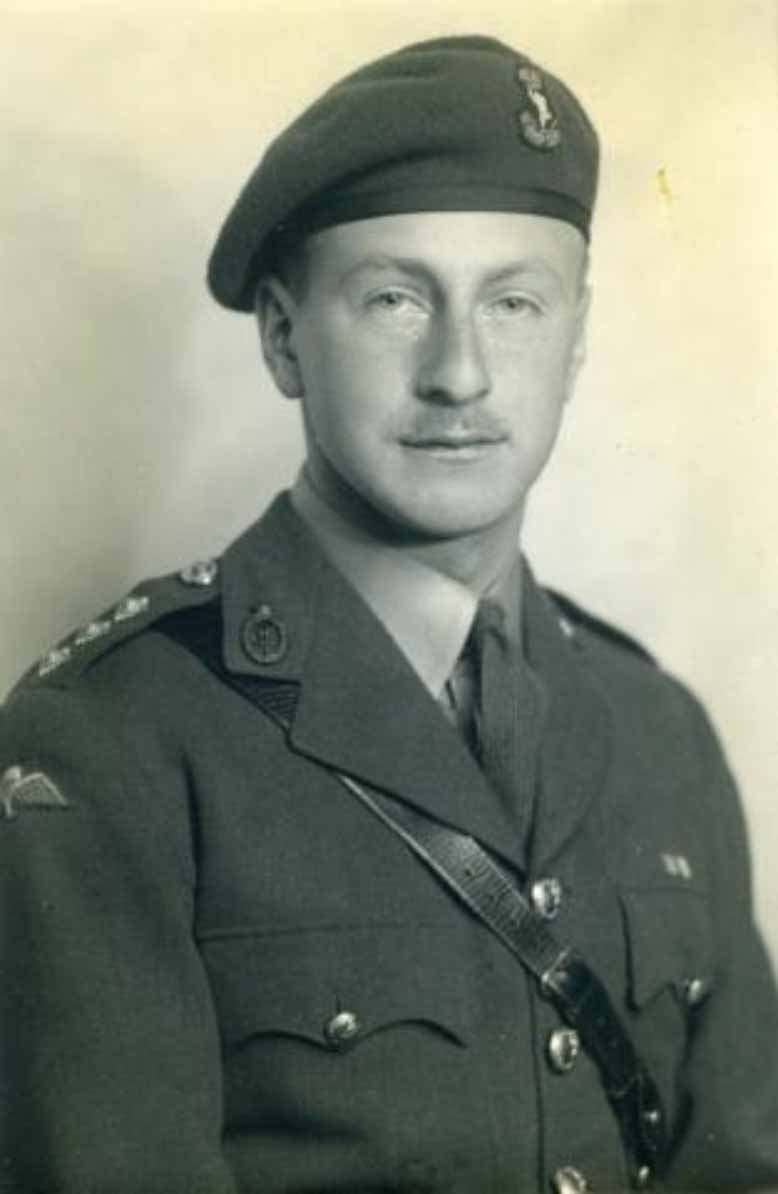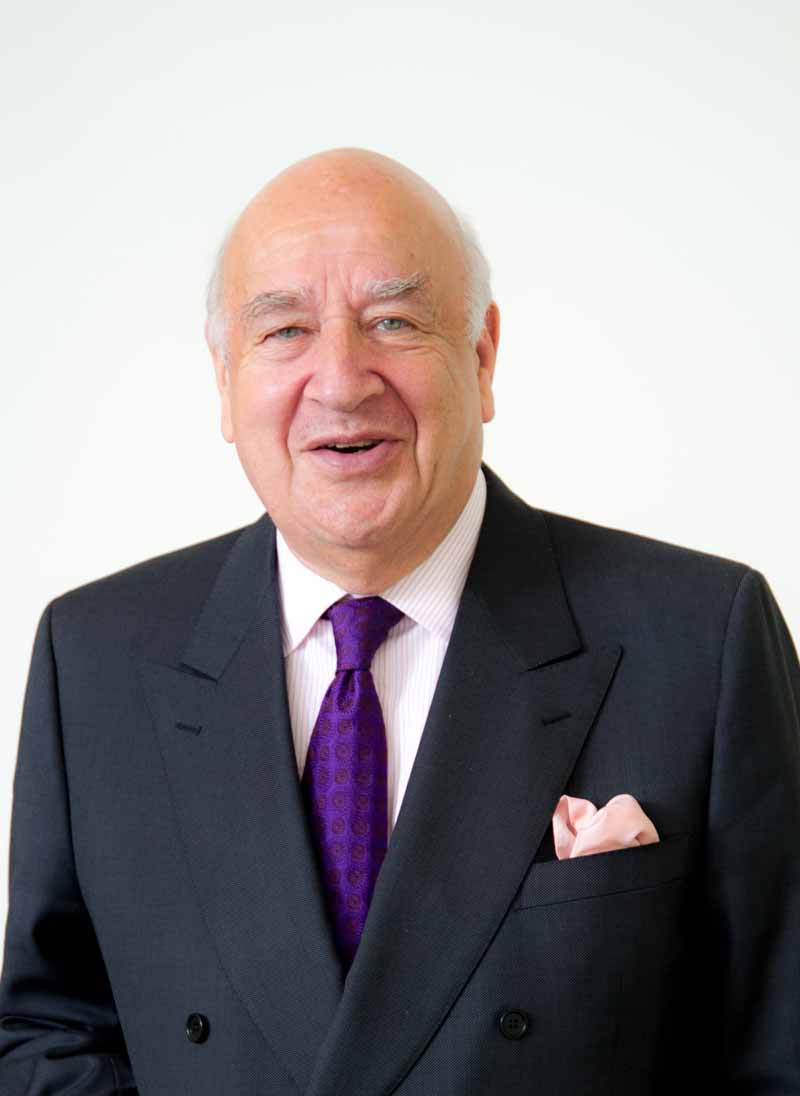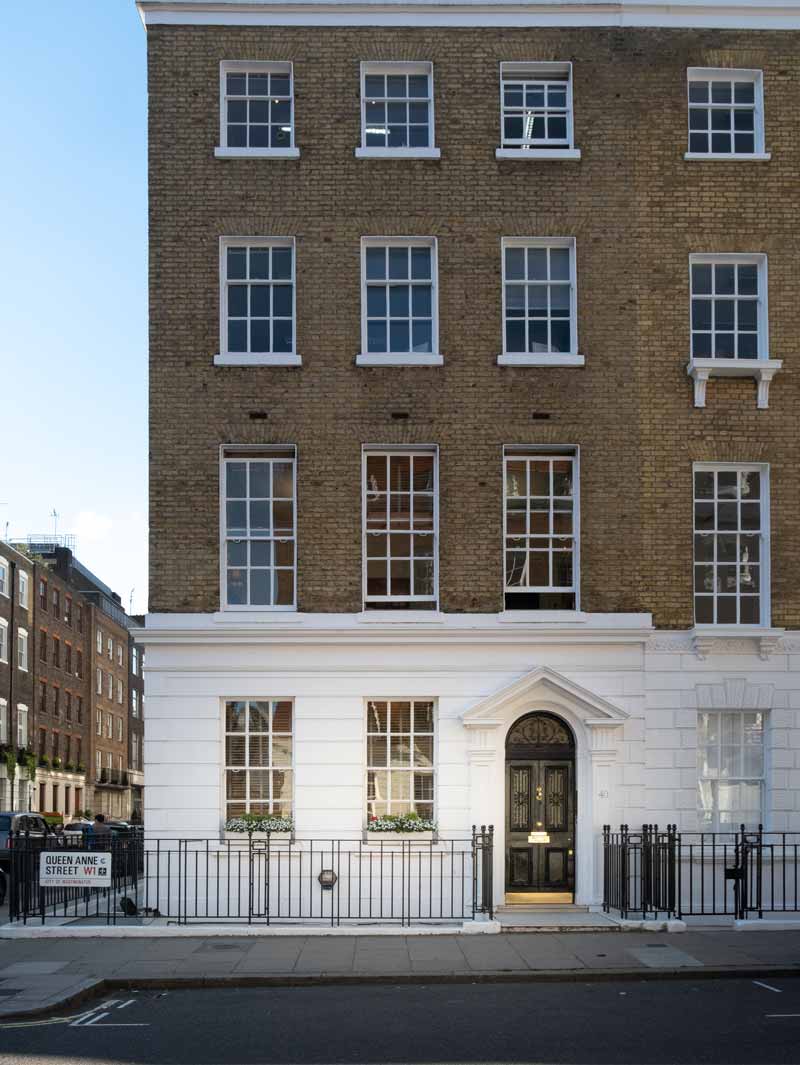The World of Lewis Golden
The history of Lewis Golden
Founded in 1950 and based in the heart of Marylebone at 40 Queen Anne Street we are an established firm of Chartered Accountants, Tax Advisors and Auditors.
Lewis Lawrence Golden OBE
Our firm was founded by Lewis Lawrence Golden OBE, who served with the 1st Parachute Brigade before returning to London in 1946 and qualifying as a Chartered Accountant.
By December 1950 he had set up Lewis Golden & Co in Marylebone, “always hoping that the ‘& Co’ would come along”.
Lewis was a founder of Everest Home Improvement in 1964 which was set up in our Queen Anne Street office and later became the second biggest business of its kind in the UK.
He took tax cases to the House of Lords on two separate occasions, although both were lost “because their lordships were mistaken”.
The sale of Everest in 1988 helped him to reach the summit of his philanthropic ambitions, having been active in local affairs since the late 1940s when he would stand on his soapbox at Speakers’ Corner, arguing against fascism. In 1957 he was one of several congregants to leave West London Synagogue and form Westminster Synagogue, serving as treasurer, chairman and president. He replicated this in many other endeavours, including at Chichester Cathedral, where he helped to establish the millennium endowment trust. Even in the Lake District, where he enjoyed fell walking, he became a trustee of the Wordsworth Trust.
His OBE was awarded in 1978 as part of the Queen’s Birthday Honors for his work in connection with the London Library, based in St. James’ Square.
He stepped down from the firm in 1990, 40 years to the day after its founding.


The evolution of today’s firm
Lewis was joined in the partnership by Neil Benson in 1963. Neil became the firm’s Senior Partner and later its Chairman until his retirement from the firm after more than 60 years as a Partner, in March 2024.
Neil forged strong relationships and became close friends with many high-profile clients, often across the generations of a single family. Unbiased and fiercely independent, Neil’s had one quality standard and it was the highest possible service level. Like so many of his guiding principles, this is embedded in the way the practice operates today.
This has been a successful strategy for the firm and it is one of the reasons that we doubled in size three times over during Neil’s tenure, growing from a small, young, local Marylebone practice to the full-service mid-tier advisory, accounting and tax business of today. More than 70 years after the partnership was founded, and having converted to the current LLP structure in 2015, the practice continues to thrive. We have gone from Lewis working alone to a team of more than 70 people, and are among the top 75 firms in the UK.
From its origins as an accounting and tax practice the firm now also provides a wider range of personal and business advisory services including trust, probate, estate administration, financial modelling, systems implementation and support to family offices.
This expansion over the years means that we now have another office next to Wigmore Hall, just around the corner from our Queen Anne Street home. These premises provide our team with modern work, meeting, collaboration and break-out spaces.
40 Queen Anne Street
Our office at 40 Queen Anne Street is the heart of the firm. Some of our long serving colleagues claim to have worked in every room at one time or another.
Our long tenure here is only a small part of the building’s rich history.
Queen Anne Street itself was first rated in 1723, and was named by Edward Harley after his father’s enjoyment of Queen Anne’s patronage.
The first occupant of No.40 was Mrs Tarrent, a widow, who lived here until 1745. The house then passed to a Miss Pringle who by 1760 had sold it to Henry Herbert, 10th Earl of Pembroke and 7th Earl of Montgomery (1734-1794). Lord Pembroke seems to have used it as a London town-house only during the Season.
Records for 1792 show No. 40 Queen Anne Street in the occupation of a Mr Colborn. By 1796 it was held by a Miss Clay. Before the turn of the century, it passed to a Mrs Leece (spelt ‘Lace’ in some records) who lived here to her death about 1846. Her executors sold the dwelling to the surgeon, Benjamin Denman, and from him it was acquired by the physician, Walter Hayle Walshe (1812-1892), who was a noted professor at University College, London, between 1841 and 1862.
No. 40 was then either rebuilt or very substantially refurbished because in 1872 it appears in the post office directories as the George Tavern, in the proprietorship of John Henry Murray. It continued as a public house until the early 1920s when it was again substantially refurbished and returned to medical occupation with the surgeon, Fielden Briggs.
Records for 1927 show the chief occupant as the laryngologist, D.F.A. Neilson, who in that year was sharing with Edward Phillimore Brockman (1899-1977) Consulting Orthopaedic Surgeon to Westminster Hospital. Neilson continued at No. 40 until shortly after the Second World War.
The property then became the offices of the Treasurer’s Department of the South-Western Metropolitan Region of the Hospital Board. It continued so until the 1960s when it was taken on by the chartered accountants and registered auditors, Lewis Golden, and we occupy it to this day.

Client experience
How we work with our clients
Our service is characterised by care, attention to detail, an intellectual approach, and a dash of humour all led by experienced professionals.


